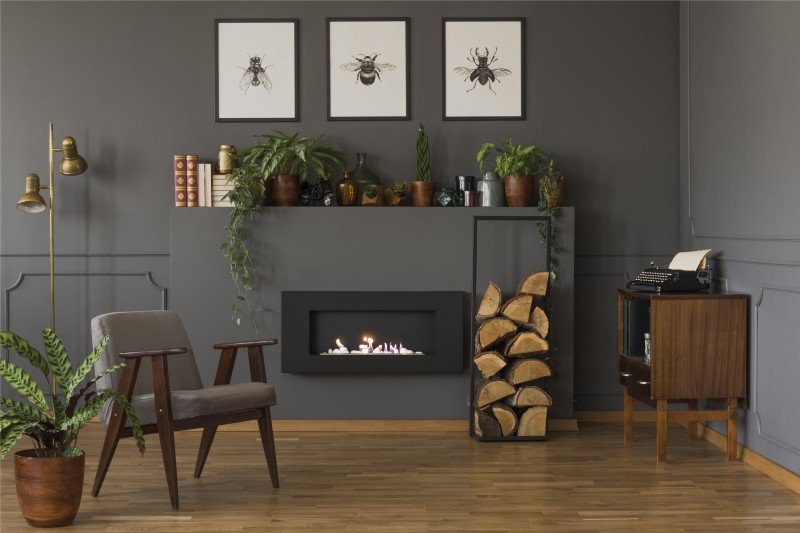The Charm and Functionality of Fireplaces: A Comprehensive Guide
Fireplaces have long been a main feature in homes, signifying heat, friendship, and comfort. They come in various styles, products, and fuel types, dealing with the preferences and needs of varied house owners. This article dives into the complex world of fireplaces, exploring their history, types, setup considerations, and upkeep ideas, while offering FAQs to attend to typical questions.
A Brief History of Fireplaces
Historically, fireplaces acted as the cornerstone for cooking and heating homes. In ancient times, an open hearth was typically put in the center of a house. Over centuries, architectural improvements assisted in the advancement of more advanced styles, progressing from easy stone structures to elaborate mantels that administer over modern living spaces.
Secret Historical Milestones:
- Ancient Times: Open fires in caverns and primitive huts for warmth and cooking.
- Middle Ages: Large, commonly centralized chimney structures in great halls of castles.
- Renaissance: Decorative mantels and designs gain popularity, with the fireplace becoming a sign of wealth and status.
- Industrial Revolution: Advancements in products and making permit for a wider variety of fireplace styles.
- Modern Era: Gas and electric fireplaces become commonplace, permitting increased convenience and safety.
Kinds of Fireplaces
Today, numerous types of fireplaces are offered, each with its unique qualities. Below is a breakdown of the most typical types:
| Fireplace Type | Description | Pros | Cons |
|---|---|---|---|
| Wood-Burning | Traditional fireplaces sustained by wood. | Genuine experience, heat output. | Labor-intensive, requires appropriate venting/maintenance. |
| Gas | Fireplaces that use natural gas or gas. | Easy to utilize and preserve. | Less ambiance compared to wood. |
| Electric | Uses electrical power to create heat and flames. | Safe, no venting required. | Minimal heat output, higher energy costs. |
| Bioethanol | Utilizes bioethanol fuel, producing clean flames. | Environmentally friendly, portable. | Requires regular refueling. |
| Pellet | Utilizes compressed wood pellets as fuel. | Clean burning, sustainable. | Requires power for operation. |
Additional Considerations
When picking a fireplace, it is vital to think about factors such as:
- Fuel Availability: Consider what fuels are readily accessible in your area.
- Space and Aesthetics: The size of your living location and your design choices should assist your option.
- Structure Regulations: Always speak with local policies to ensure compliance and safety.
Installation Considerations
Installing a fireplace involves more than simply positioning a structure in your home. Comprehensive planning, professional input, and adherence to safety codes are vital. Here are some crucial steps:
- Planning: Consider the size and kind of fireplace, where it will be placed, and its designated use.
- Consultation: Hire a certified specialist to examine your home and ensure appropriate setup.
- Permits: Obtain any required building permits from local authorities.
- Materials: Select suitable products for the fireplace and surrounding area. Ensure Minimalist Fireplaces are fire-resistant and developed for your fuel type.
Upkeep Tips for Fireplaces
Regular upkeep guarantees your fireplace runs securely and effectively. Here are important upkeep suggestions classified by fireplace type:
Wood-Burning Fireplaces
- Chimney Cleaning: Have your chimney cleaned each year to prevent creosote buildup.
- Examine for Damage: Check for fractures and damage to the firebox and chimney structure.
- Firewood Storage: Store fire wood far from your home to avoid bug problems.
Gas Fireplaces
- Log Inspection: Regularly analyze ceramic logs for cracks and replace if needed.
- Vent Cleaning: Ensure that vents are complimentary from obstructions.
- Pilot Light Check: Test pilot lights and ignition systems routinely.
Electric Fireplaces
- Cord Inspection: Frequently inspect electrical cables for tearing or wear.
- Tidy Surfaces: Wipe down surface areas routinely to get rid of dust and debris.
- Smoke alarm: Ensure smoke alarm in the vicinity are practical.
Bioethanol and Pellet Fireplaces
- Fuel Storage: Store fuels in a cool, dry location far from direct sunshine.
- Regular Refueling: Monitor fuel levels and refuel as required.
- Ventilation: Ensure appropriate ventilation when utilizing these fireplaces.
FAQs About Fireplaces
Q1: Do I require an authorization to install a fireplace?
Yes, many towns need licenses for fireplace installations to ensure security and compliance with local building regulations.
Q2: How often should I clean my chimney?
It is advised to have your chimney cleaned up a minimum of as soon as a year, especially if you utilize your fireplace regularly.
Q3: Can I transform a wood-burning fireplace to gas?
Yes, numerous homeowners convert wood-burning fireplaces to gas for convenience, but consulting an expert is recommended to guarantee a correct conversion.
Q4: Do electric fireplaces produce heat?
Yes, electric fireplaces can produce heat; however, their primary function is frequently for atmosphere, making them an appropriate alternative for those who desire a fire look without comprehensive heating.
Q5: Are bioethanol fireplaces safe?
Bioethanol fireplaces are typically safe when utilized properly; however, they need correct ventilation, and users must follow all manufacturer standards.
Fireplaces not only add visual appeal to homes however likewise offer practical heating options. With different types, styles, and upkeep requirements, house owners can make educated options that best fit their requirements and lifestyles. Whether deciding for the charm of a wood-burning fireplace or the convenience of a gas design, a fireplace can substantially enhance a living space's convenience and atmosphere. As the hearth stays a focal point in homes, it continues to foster heat, conversation, and connections amongst family and buddies.

